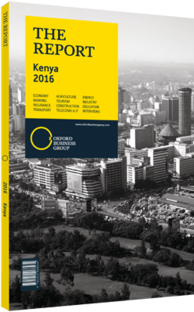Patrick Njoroge, Governor, Central Bank of Kenya (CBK) : Interview

Interview: Patrick Njoroge
The shilling has depreciated steadily against the dollar in 2015. In your view, what impact has this had on the Kenyan economy?
PATRICK NJOROGE: The Kenyan shilling has come under pressure in 2015, in large part because of an appreciating US dollar against most currencies. This situation is not unique to Kenya, however. World currencies have, in general, weakened against the dollar, mainly due to the strengthening of the US economy, as well as the expectation of an interest rate hike by the US Federal Reserve and other factors driving up demand for the safe-haven currency. Domestically, the under performance of traditional commodity exports and reduced foreign exchange inflows from tourism have added to depreciation of the shilling. The weaker currency has made Kenyan products cheaper on international markets but has increased import prices, thus worsening the country’s external position.
The current monetary policy stance that is being implemented, largely through open market operations, is sufficient to maintain price stability in Kenya. To help reduce volatility in the foreign exchange markets, CBK has intervened with direct sales and purchases in line with the price stability mandate. In the long term, further measures to address export performance should be prioritised.
What will be the implications of a higher interest rate on economic activity, particularly in terms of credit to the private sector?
NJOROGE: The recent rise in the policy rate of the CBK was caused by the need to tame inflationary pressures, including from the depreciation of the shilling. It was thought that, in the short term, the higher interest rates would slow credit growth and dampen economic activity. However, well-anchored inflation expectations are vital for sound investment decisions and sustainable medium-term growth. Nevertheless, a gradual reduction of interest rates is expected, particularly for the short term, as the monetary policy stance eases and inflation expectations diminish.
To what extent is a rise in non-performing loans (NPLs) a concern going forward?
NJOROGE: The ratio of gross NPLs to gross loans at end-September 2015 stood at 5.4%, a decline from 5.7%, registered at the end-July 2015. The CBK continues to closely monitor credit risk in the banking sector. In addition, and as a mitigating measure, the CBK has enhanced the legal and regulatory framework for credit information sharing. This has entailed the expansion of credit information sharing beyond the banking sector to incorporate non-bank entities and the reporting of both positive and negative credit history. The robust credit information sharing mechanism is providing information to enhance credit risk appraisal and mitigate non-performing loans.
What can be done to help raise the banking penetration rate further, particularly in rural areas?
NJOROGE: Kenya has shown tremendous progress in expanding access to financial services, including in rural areas. These advances have been driven by mobile financial services and agency banking. The “Financial Access Geospatial Mapping Survey 2015” shows that 73% of the adult population lives within 3 km of a financial service access touch-point in 2015, compared to 58.7% in 2013. In particular, 60% of the population lives within 3 km of a bank agent, while 75% lives within 3 km of a mobile money agent. Going forward, the CBK will seek to strengthen the legal and regulatory framework, in collaboration with other players, to promote the use of digital platforms for other financial services beyond payments and banking services. These include insurance, pensions and capital markets products. The CBK will also support innovations by market players that extend financial services particularly to rural underserved areas.
You have reached the limit of premium articles you can view for free.
Choose from the options below to purchase print or digital editions of our Reports. You can also purchase a website subscription giving you unlimited access to all of our Reports online for 12 months.
If you have already purchased this Report or have a website subscription, please login to continue.

